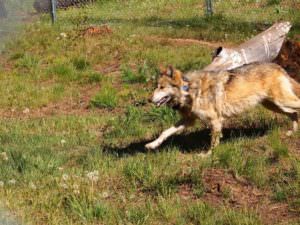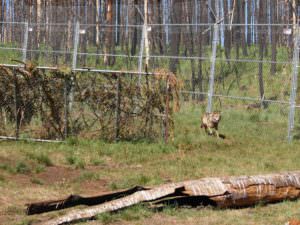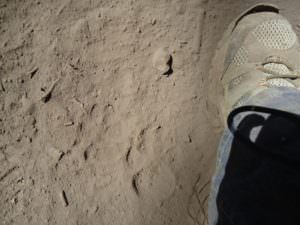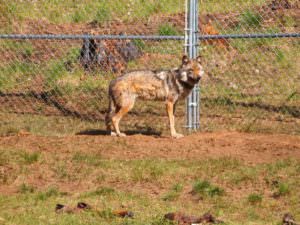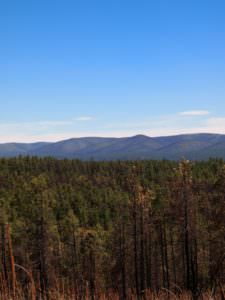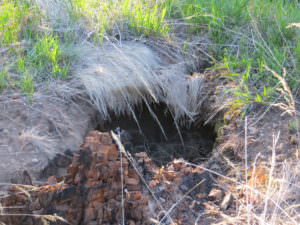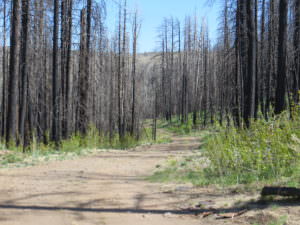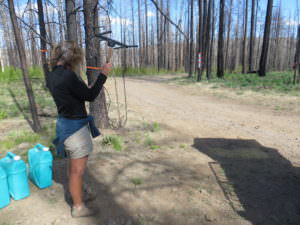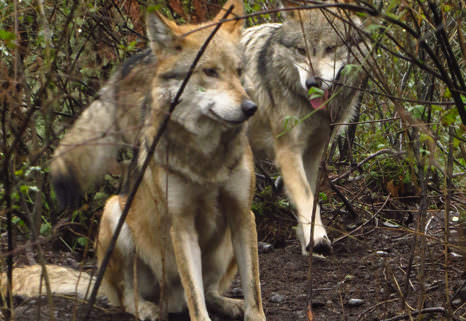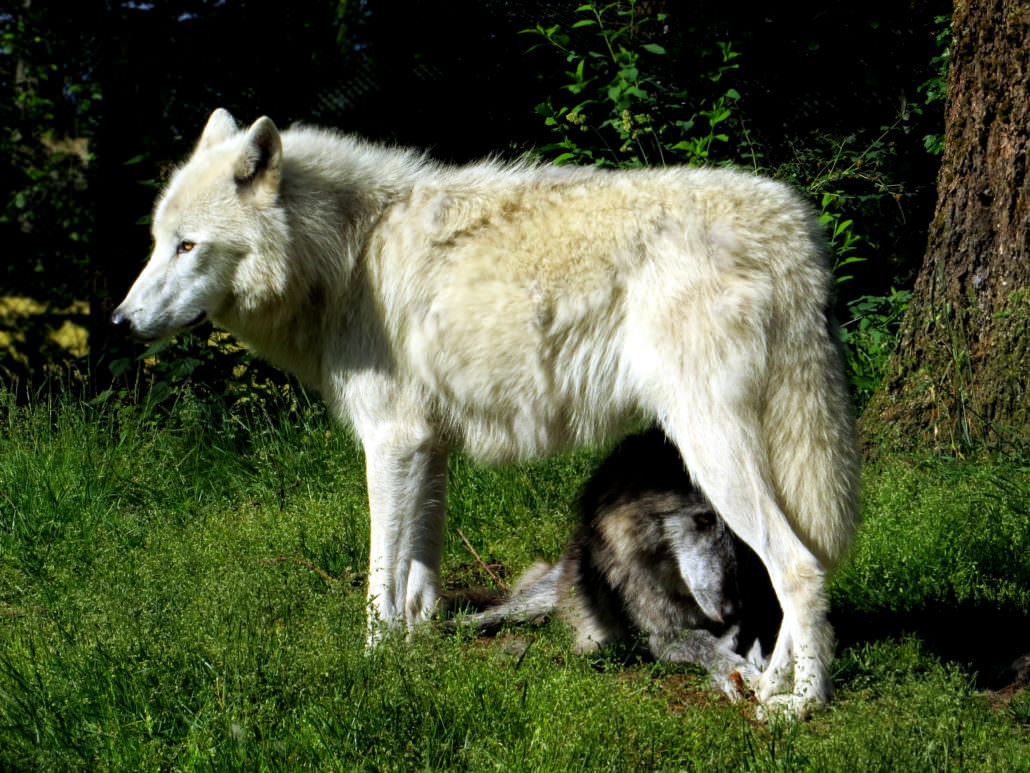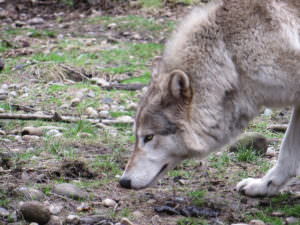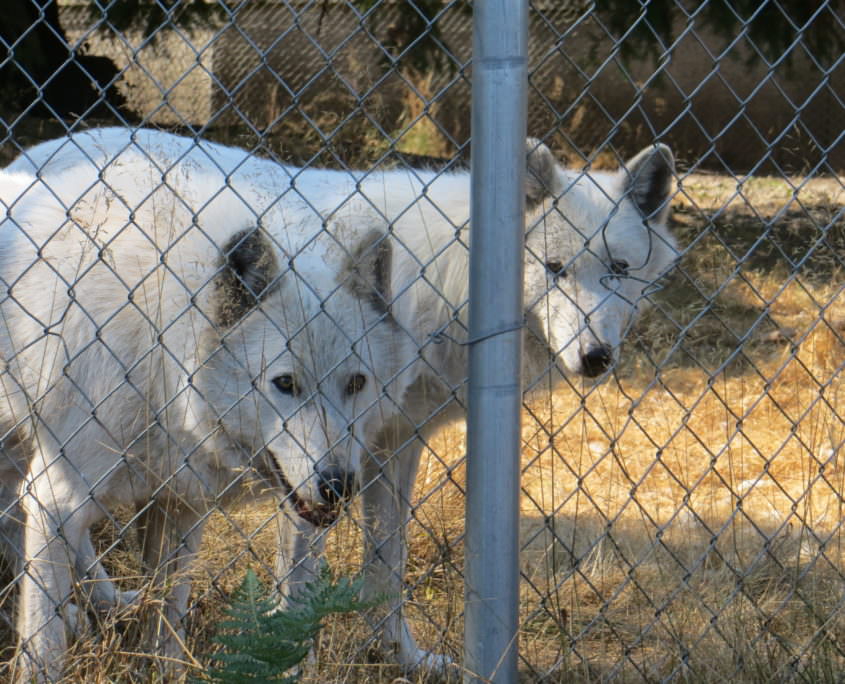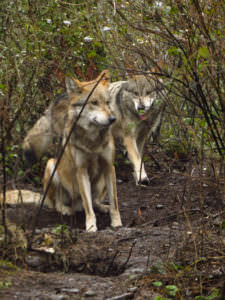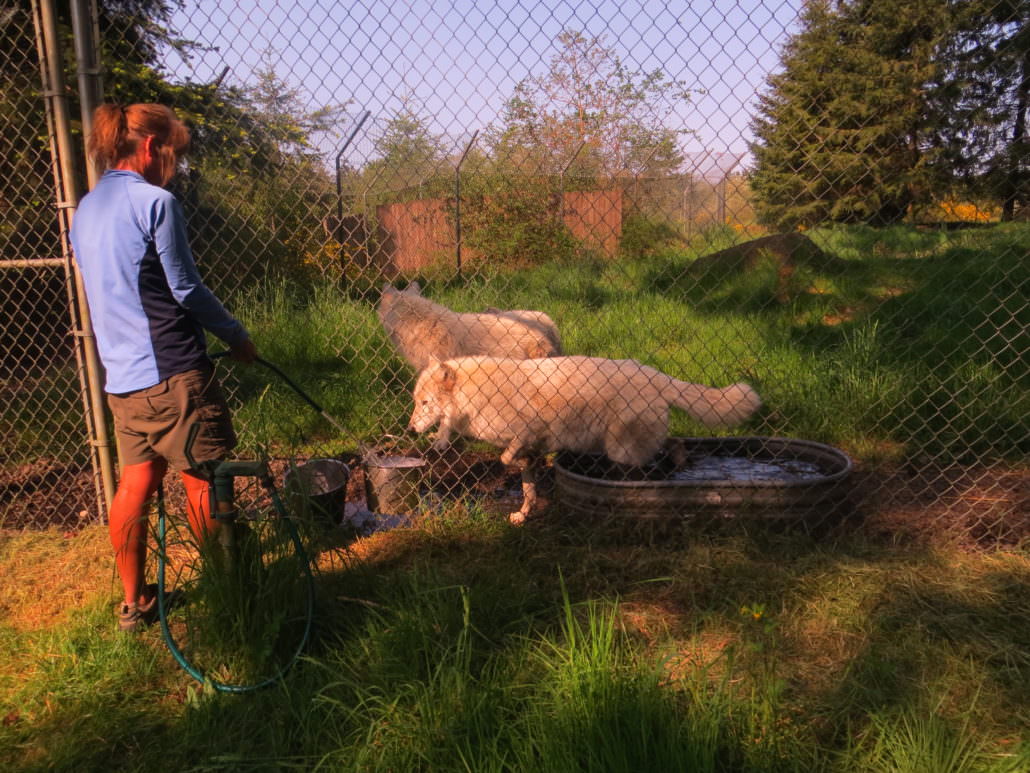Helping Save Mexican wolves (#9) – fence fighting between free-ranging & captive wolves
Nearly exterminated in the wild during by the 1930s, the Mexican wolf remains one of the most endangered mammals in North America. In May, Wolf Haven’s Director of Animal Care Wendy Spencer assisted in the care & observation of two wolves scheduled for future release. This is Part 9 of an ongoing series of blog posts about her experience in Arizona.
As I headed to the blind the next morning, a herd of elk cut me off as they made their way across the road. They were huge and beautiful and a picture of sheer grace as they trotted by, except for the baby who was still a bit wobbly.
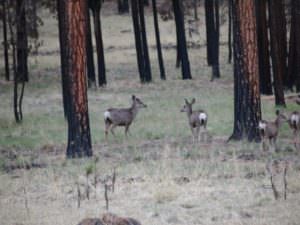 As I crested the ridge, I could hear loud whimpering and whining coming from the pen, amplified by the surrounding hillsides. I was still too far off to see the pen but the sounds continued as I approached. Out of the corner of my eye I saw a group of mule deer slinking past me. Their eyes were as big as saucers and even an uneducated observer like me could tell they were concerned about something. I continued to make my way down to the blind and as the pen came into view I could see movement along the perimeter in front of me.
As I crested the ridge, I could hear loud whimpering and whining coming from the pen, amplified by the surrounding hillsides. I was still too far off to see the pen but the sounds continued as I approached. Out of the corner of my eye I saw a group of mule deer slinking past me. Their eyes were as big as saucers and even an uneducated observer like me could tell they were concerned about something. I continued to make my way down to the blind and as the pen came into view I could see movement along the perimeter in front of me.
It turned out to be an elk darting back and forth along the fence line and M1051 and F1126 were 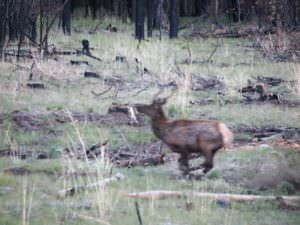 frantically running alongside him. Seconds later I caught a glimpse of something behind the elk but I was still far away and the lighting was poor but the animal looked decidedly canine. I couldn’t believe my eyes! The elk suddenly turned away from the pen and began running up the hill just to the left of the blind and by that time I had made it to the blind and I could make out the distinct coat color and pattern of a Mexican gray wolf as he gave chase to the elk. They both disappeared from view but I could hear them crashing through the woods.
frantically running alongside him. Seconds later I caught a glimpse of something behind the elk but I was still far away and the lighting was poor but the animal looked decidedly canine. I couldn’t believe my eyes! The elk suddenly turned away from the pen and began running up the hill just to the left of the blind and by that time I had made it to the blind and I could make out the distinct coat color and pattern of a Mexican gray wolf as he gave chase to the elk. They both disappeared from view but I could hear them crashing through the woods.
Meanwhile, the wolves in the pen were coming unhinged. They were whimpering and whining and alarm bark/howling- a clear sign that they were agitated and in distress. Even with the naked eye I could see their hackles standing on end from head to tail, with tails held straight up in the air. They quickly bolted to the opposite side of the fence as a wolf came running to the fence and they began fence fighting with each other but this did not look like the same wolf that I watched run after the elk. All of a sudden, the elk came tearing towards the pen again, with the wolf still in tow! The elk found himself caught in between the two free ranging wolves and repeatedly darted back and forth. However, at one point the two wolves took time away from the elk to fence fight with the pair. The fighting became so intense that it was in that moment that the young spike saw his opportunity to get away and I watched as he bolted up the far hill and eventually out of sight.
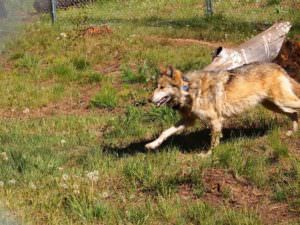 I could not believe what I was seeing! The wolves would periodically take a break from fighting and essential go off to their own corners which allowed me to get good visuals through the scope. I could clearly see a radio collar on one of the free ranging wolves, who presumably was M1107. Even though I didn’t pick up his signal at all during the night, he was the only wolf that had been known to visit the pen site. Also, he was one of just a handful of wolves equipped with a GPS collar and through the scope I could see the telltale antenna. The other wolf looked and behaved like a juvenile- most likely a yearling. She was much darker in color and her markings were more muted than the other wolves. And although there was no clear indication as to whether she was indeed a female, she just “looked” female to me.
I could not believe what I was seeing! The wolves would periodically take a break from fighting and essential go off to their own corners which allowed me to get good visuals through the scope. I could clearly see a radio collar on one of the free ranging wolves, who presumably was M1107. Even though I didn’t pick up his signal at all during the night, he was the only wolf that had been known to visit the pen site. Also, he was one of just a handful of wolves equipped with a GPS collar and through the scope I could see the telltale antenna. The other wolf looked and behaved like a juvenile- most likely a yearling. She was much darker in color and her markings were more muted than the other wolves. And although there was no clear indication as to whether she was indeed a female, she just “looked” female to me.
Up until this point, everyone on the IFT thought that M1107 was traveling alone but somewhere on his travels, he managed to pick up this little female- perhaps a yearling from the Maverick pack….. (to be continued)

